The Need for a Minority Contractors’ Group Continues
The Need for a Minority Contractors’ Group Continues
By Rhonda Crowder
Considering the racial and gender makeup of Greater Cleveland, the construction industry has been
underserved for over 100 years. At the same, minority contractors have continuously fought for a
seat at the table and representation while a number of public policy, business and legal actions
have shaped FBE (female business enterprise) and MBE (minority business enterprise) opportunities.
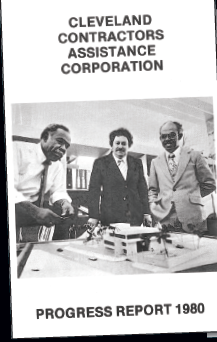
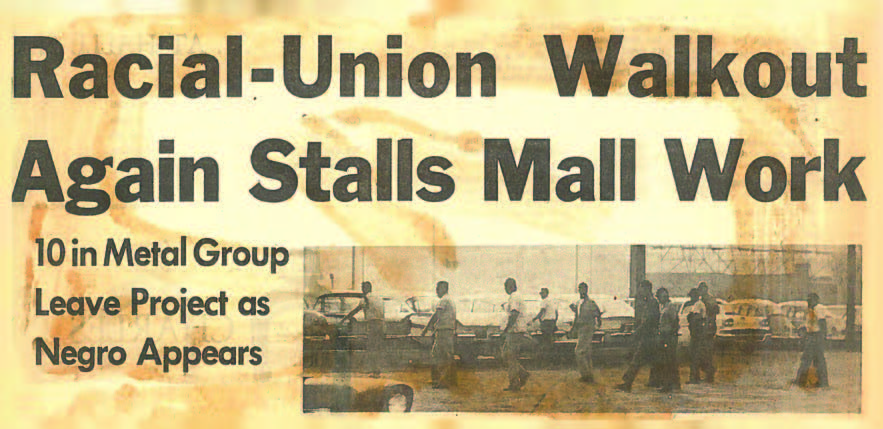
In 1969, an organization of Black contractors led by the late James H. Walker formed in Cleveland.
Construction Contractors Assistance Corporation (CCAC) membership comprised several storied names
in Cleveland’s minority construction history including Ware Plumbing, Durham Brothers Construction,
Seawright Construction, Burks Electric, Ozanne Construction, and others. One of the more
significant activities of CCAC was the development of its construction management training course,
which later became the James H. Walker/Turner School of Construction Management. It continues today
on the campuses of Cuyahoga Community College (Metro) and Kent State University.
Unfortunately, CCAC was short-lived.
In 1971, Governor George Voinovich signed Executive Order 91-251, which reorganized Ohio’s minority
business assistance programs and created the Equal Opportunity Center. Then, in 1980, the State of
Ohio passed House Bill 584, landmark legislations that established Minority Contractors and
Business Assistance Programs and a Minority Development Financing Commission to provide loans and
surety bonds. This new law required 15 percent of state purchases for goods and services, 5 percent
of prime construction contracts and 7 percent of construction subcontractors to be set aside for
minority business enterprises.
But, in 2000, the Ohio Minority contractors set aside program was ruled unconstitutional.
In 2003, Ohio Governor Bob Taft established the Encouraging Diversity Growth and Equity program, to
assist, nurture and support the growth of economically and socially underutilized businesses for
State of Ohio contracts in construction, architecture, engineering, and professional services. The
EDGE program provides procurement preferences, bonding and financial assistance and technical
support. Nearly 5,000 companies have participated in the program.
Cleveland’s Fannie Lewis Law took effect in 2004, requiring that city of Cleveland residents make
up at least 20 percent of the workforce on all construction projects where there is a city contract
exceeding $100k. This law was overturned in 2019 by the Ohio Supreme Court, notwithstanding its
widespread acceptance and successful economic impact.
Then, in 2008, Governor Ted Stickland signed executive order 2008-138, outlining practices and
initiatives to increase participation in the MBE and EDGE programs as well as appointed an
EEO officer to monitor compliance and report non-compliance for state agencies.
However, it took nearly 35 years for the state of Ohio to reach its 15 percent purchase goal, under
Governor John Kasich’s administration.
While few of CCAC companies or their corporate descendants are around today, they paved the way for
their successors, who united in 2009 to form the Contractors Assistance Association (CAA). The
mission of CAA, which is affiliated with the Construction Employers Association (CEA), is to
advance inclusion in construction through education, employment and contracting opportunities.
“There was no multiracial construction organization with minorities and women as members and in
leadership positions,” said Dominic Ozanne, CEO of Ozanne Construction, the first president of CAA
and immediate past chair of CEA.
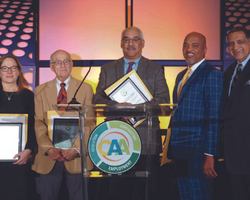
Al Sanchez, Terri Sandu, John Todd, and Mark Rivera work with Ozanne to establish CAA in addition
to Glen Shumate who was hired as the executive director. At the time, CEA, the majority union
contractor association in Northern Ohio, only had two diverse members.
“In addition, we wanted to focus on contracting, employment, and construction education just as
CCAC and Cleveland Hometown Plan did back in the day.”
The Cleveland Construction Equal Opportunity Plan (“The Hometown Plan”) was a 1970s-era program
among unions, community organizations, and the city of Cleveland to assist with job placement for
minorities.
According to Ozanne, the purpose of the new CAA is to create, within CEA, an organization
consisting of the owners of majority, minority and female firms that would collaborate to create
and support mentor-protégé and assistance programs to grow competitive, union-affiliated minority
and female construction companies, promote construction education and pre- apprenticeship training
for young people, especially Cleveland Metropolitan School District students, and promote
employment goals and targeted hiring programs to provide employment opportunities for Cleveland
residents, minorities, and women.
Ariane Kirkpatrick, owner of The AKA Team, believes CAA is living up its mission. “CAA has
empowered groups like the Hispanic Contractors Association and National
Association of Minority Contractors to organize and have a larger, more unified voice for their
members,” said Kirkpartrick, who also led CAA as president for nearly six years.

Cynthia Leitson, Vice President, Capital, Construction, and Facilities Cuyahoga Community College
thinks there’s a need in the community for an organization like CAA, to help bring owners,
agencies, contractors, engineering and consulting firms together under a mix of different
programming to help advance inclusion work for all of our respective organizations and for the
success of our city.
“At Tri-C, we find the CAA relationship building events, contractor resources and the educational
components/workforce training critically important to our organization and the industry as a
whole,” she said.
Tari S. Rivera, president of Regency Construction Services, Inc., said CAA provides her with
opportunities to meet and introduce her firm to owners who are pursuing partners on projects.
“One of the benefits are the speakers at CAA’s meetings who discuss topics such as legal, human
resources, bonding, and legislative issues relative to our businesses,” Rivera said. “This type of
opportunity allows us to gain information to assist with building capacity within my firm without
incurring a cost.”
Mark Panzica, owner Panzica Construction, believes diversity and inclusion is important for the
construction industry as they face significant shortages, and it’s an issue that needs focus and
attention. “It only opens us up to more opportunities for everyone to benefit from an untapped
workforce,” he said.
Although CAA has accomplished a lot in the last ten plus years, there’s still work to do.
Construction is a great industry, one of the world’s largest. The industry has not done an
effective job of selling the benefits of contracting and construction employment to young diverse
people. Nor have the relationships between the majority and diverse contactors developed. CAA was
created to do this in collaboration with CEA. Progress has been far too slow.” said Ozanne.
“The rollback of preferences has caused the number of minority contractors to shrink dramatically.
Throughout the industry, there are far more contracting opportunities than there are minority
companies to take advantage of them. Moving forward CAA and organizations with a similar mission
have their work cut out for them.” CAA established a successful Construction Management Academy
(CMAP), which provided high school students with education and connection to the industry for
internships and careers in construction. CMAP was the predecessor to the ACE Mentor Program of
Cleveland.
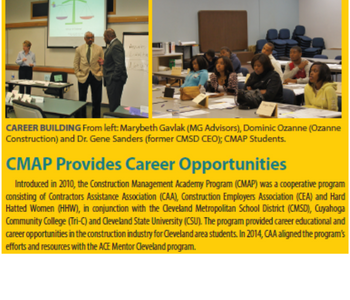
Initiatives like the ACE Mentor Program of Cleveland have seen some success in attracting minority
students to the architecture, construction and engineering industry. And, since its inception into
this market in 2008, the ACE Mentor Program of Cleveland has awarded over
$1.4 million in scholarships to Cleveland and Warrensville Heights High School students aspiring to
further their education in college or trades careers and support their entry into careers.
“Through The ACE Mentor Program, I learned so much about the roles of architects, contractors, and
engineers. I gained exposure at an early age while in high school,” says Imani
Young while interning at Albert M. Higley Company, a construction company that is well known
for its work throughout Ohio.
Young said her favorite part of The ACE Mentor Program was always building the sturdiest tower or
building with the materials given such as spaghetti noodles or marshmallows.
“Due to ACE, I was able to afford college. They gave me twenty thousand dollars for me to continue
and further my education. I am greatly thankful to ACE and ACE Cleveland especially for helping me
go through college and attain my Bachelor's degree in Architecture,” Young said.
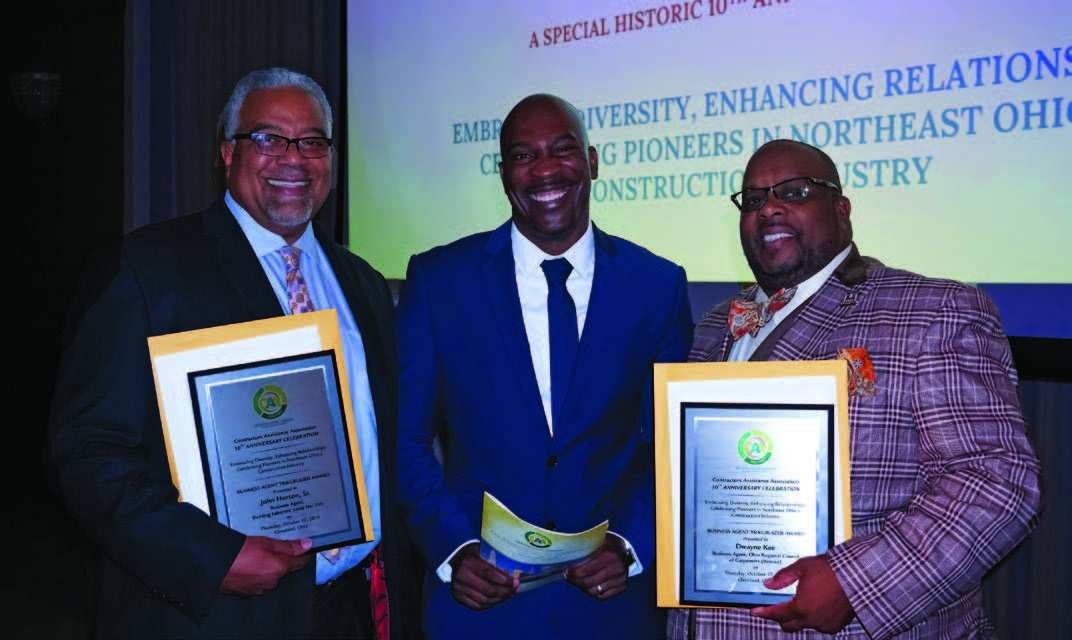
Currently, CAA has 65 members including architects, contractors, engineering and professional
service firms and recently elected its newest slate of officers Adrian Maldonado, president; Fatima
Ware, vice president, Heather Baines, treasurer and Rhoni Thompson, secretary.
Maldonado, president of Adrian Maldonado & Associates, has been in business for over 15 years and a
member of CAA for about five years. He believes minority contractors need support as well as
patience to be successful.
“We need patience from these bigger firms that talk about diversity and look for partners.” For
example, he says, when he worked with Turner Construction on the MetroHealth project, he made it
known the necessity for him to get paid promptly so he can, in turn, pay his staff. They worked to
accommodate him but that’s not always the case with prime contractors.
“Having the right partners is important,” he says.
And, the development of those relationships and partnerships more often than not begins at
CAA.
